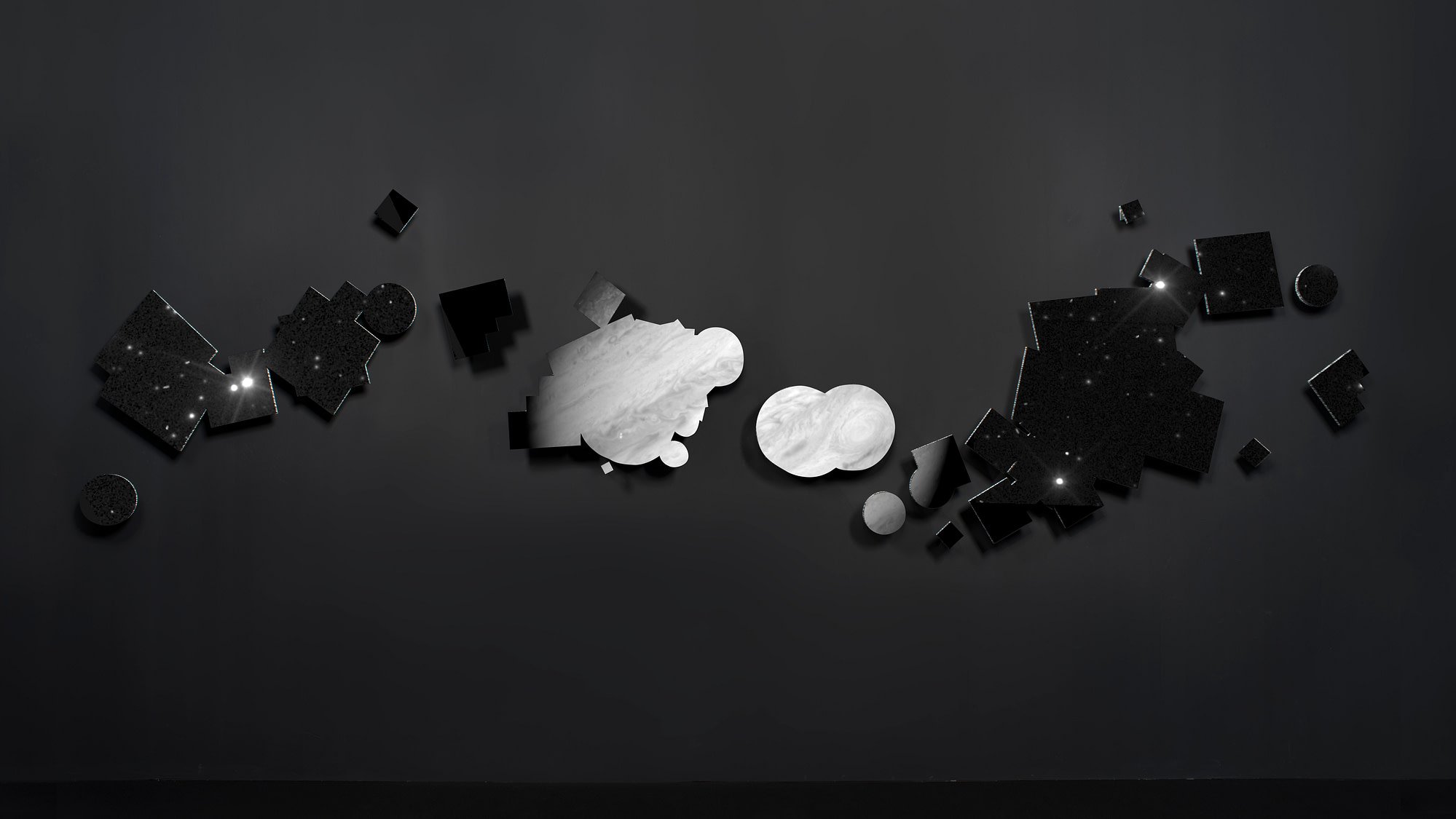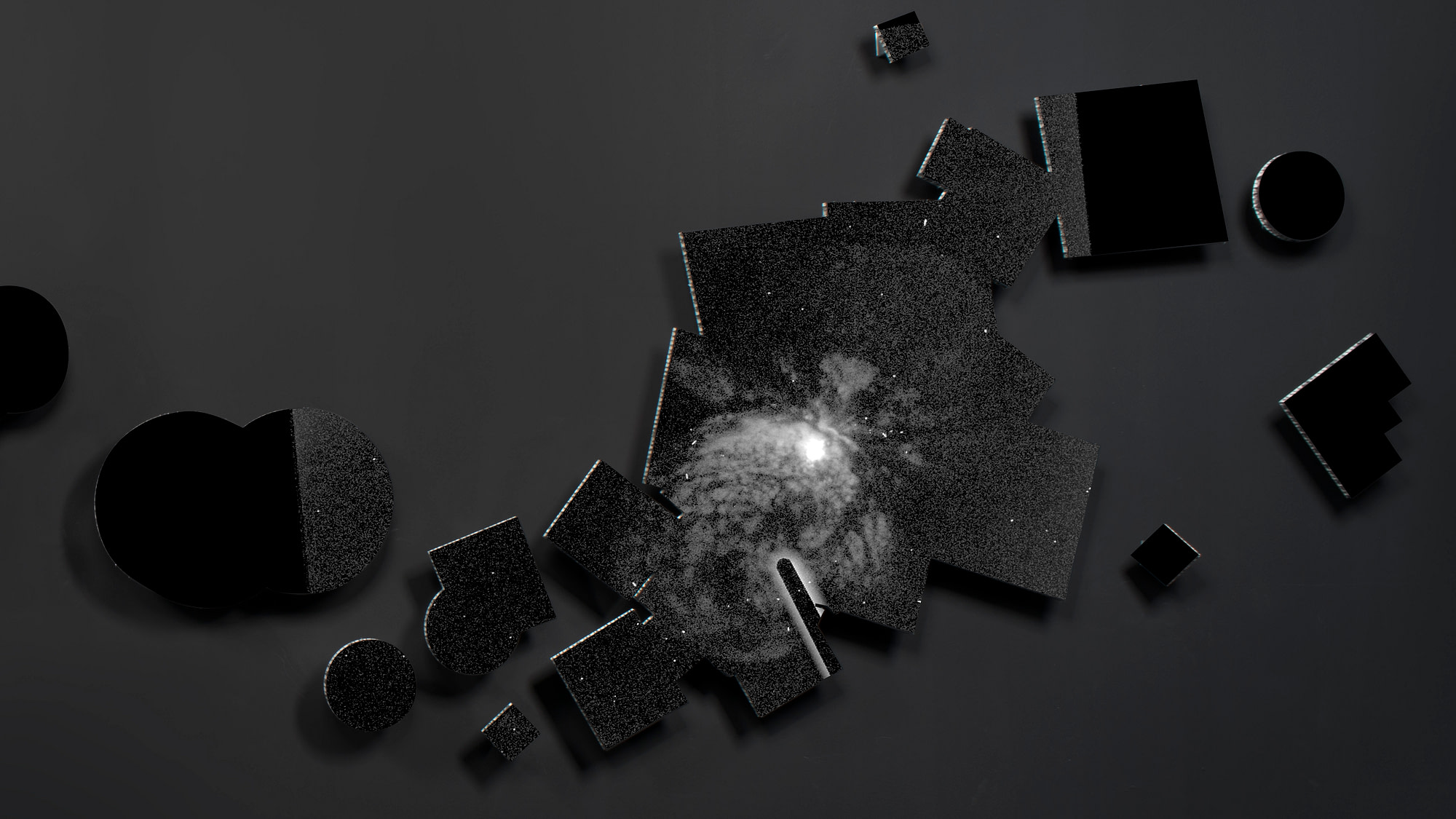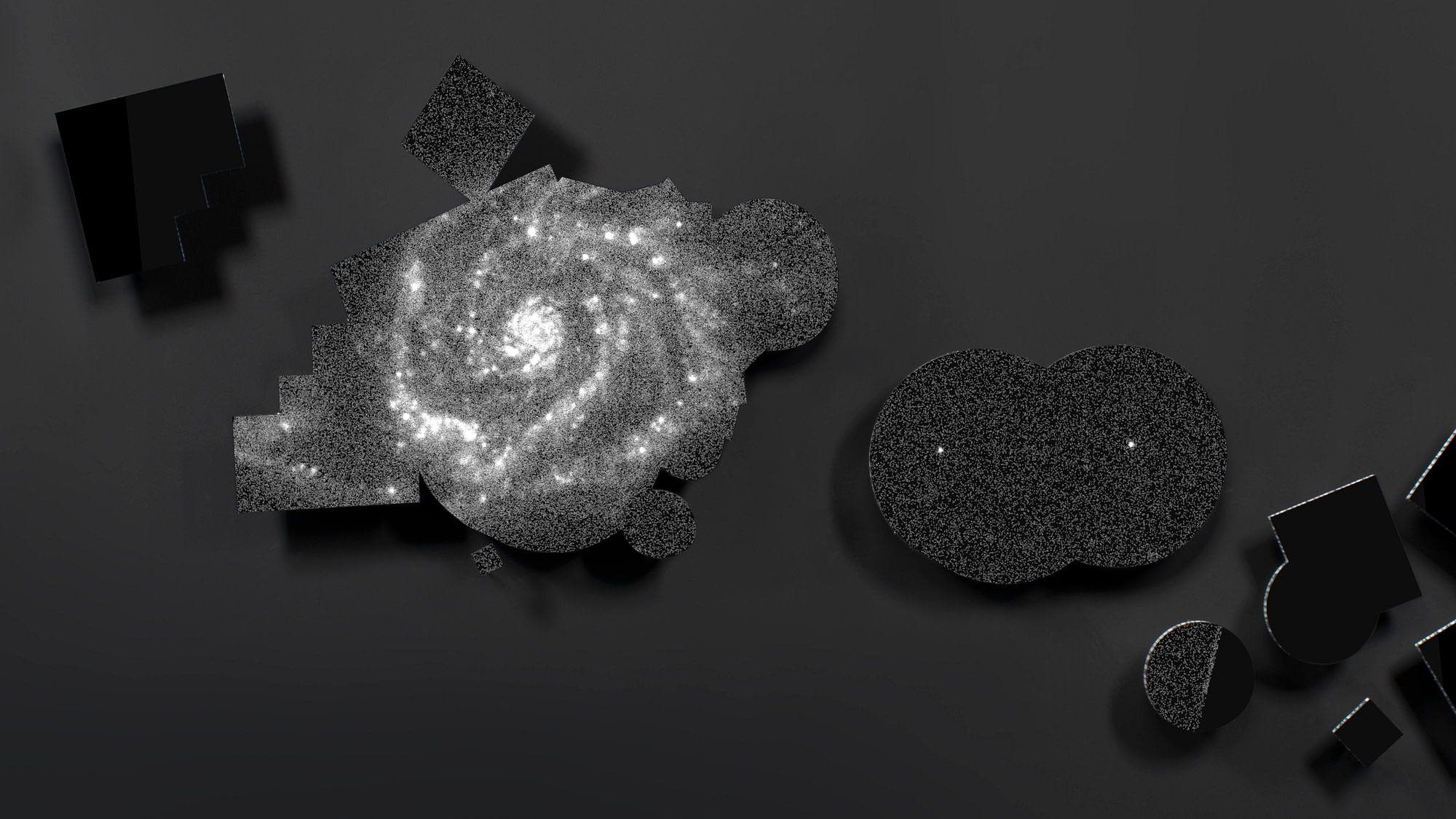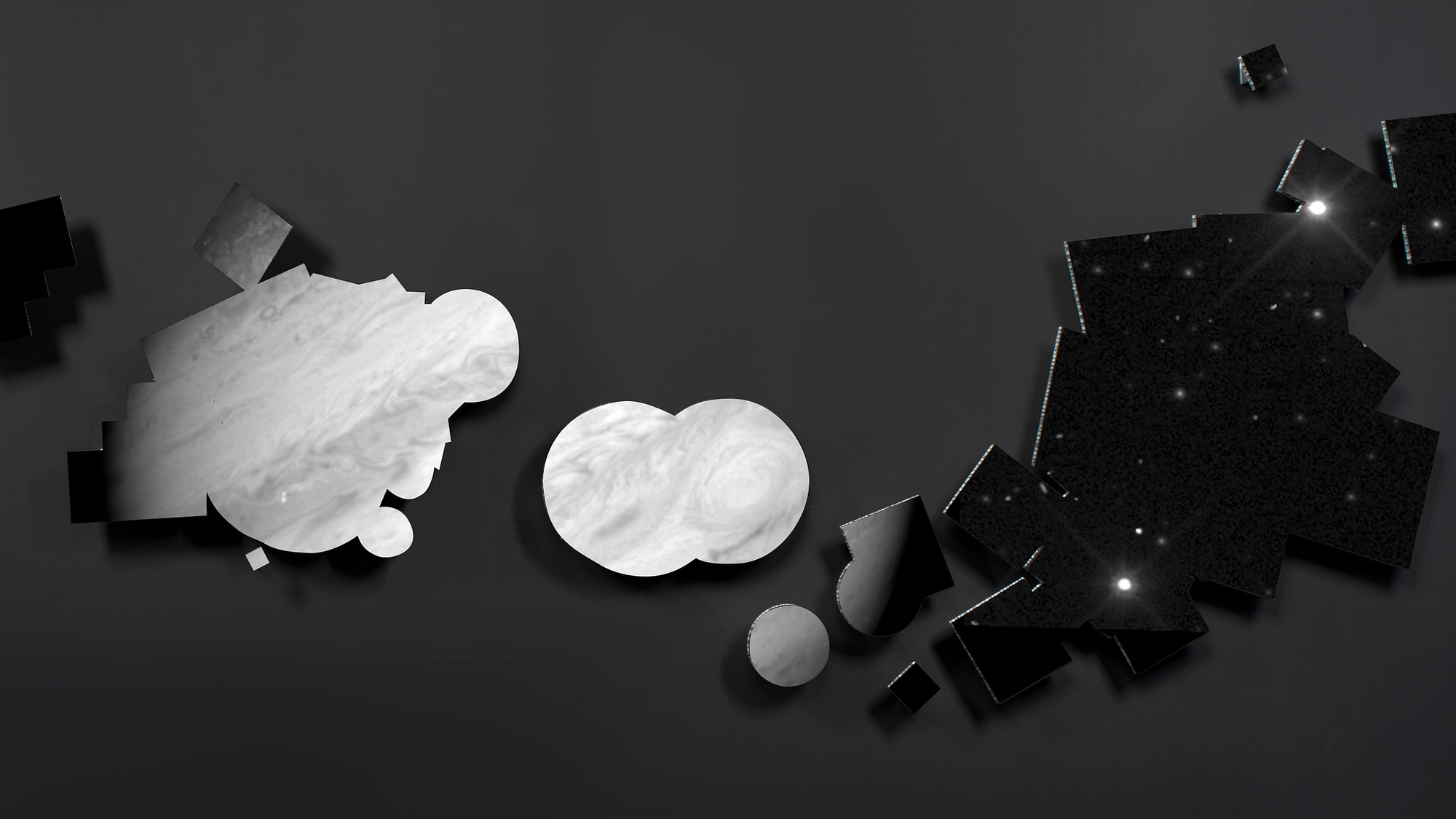2014
multi-channel HD moving image with 6 metre wide Alucore screens
A Semiconductor work by Ruth Jarman and Joe Gerhardt.
Catching the Light is a moving image installation which explores how science and technology frame our experiences of the natural world.
Created using visual data collected by space telescopes, the six metre wide projection is made up of thousands of images which have been assembled to create time-lapse sequences. By collaging these images of space together, Semiconductor have disrupted their original spatial relationships, to create new patterns and points of reference. They have, in effect, remapped the sky.
By collecting the data in its rawest form Semiconductor are able to present it as the telescope captured it. Ordinarily scientists would remove any noise, anomalies or signatures of the technology associated with the capturing process, but Semiconductor have embraced these artefacts, using them to remind us of how our perception of deep space is framed by the tools and processes of science.
The shape of the screens reflect the space observatories’ image capturing process: as they photograph chosen parts of the sky, the trail of images produce assorted shaped arrays, which are then used as points of reference in the data archives. Semiconductor have combined three of these arrays in their native format to make the screen composition. Used in this way they become portholes or windows into the universe, they also suggest that what we are seeing is only a part of a much larger picture.
The screens are installed away from the wall to create floating objects. The aluminium composite material used to fabricate them is commonly used in the production of scientific objects sent into space; as well as being light weight and strong it typically bears its honeycomb innards revealing its workings. The matt black surface of the screen resonates with how scientists and engineers use the mattest of blacks in the production of space optics to absorb unwanted light.
The four channel sound runs along the width of the screen, shifting as events appear and disappear. Using the luminescence of the image to create and control sound, the visual events carve a sonic space out of a field of noise, producing a singing universe of harmonic tones, reminiscent of radio telescope data translated into audible frequencies.
Semiconductor are interested in how technology, made to study nature, mediates our experiences and understanding of it. Here, by employing the products of science they have created an interpretation of deep space framed by the technology that is made to capture it, leading us to question what we are experiencing.
Catching the Light is commissioned by ArtScience Museum at Marina Bay Sands in Singapore for Da Vinci: Shaping the Future exhibition, 2014-2015.
Data obtained from the Mikulski Archive for Space Telescopes (MAST)
Programmer Julian Weaver
Currently fundraising for production of single channel version. If you’re interested in supporting this please get in in touch.



